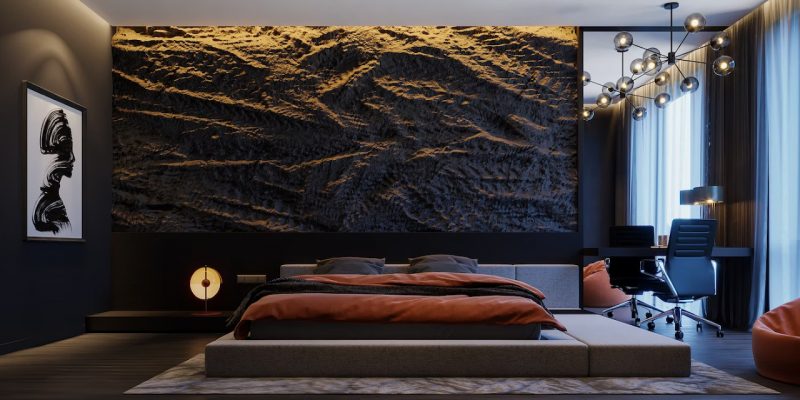Are you curious to know more about 3D visualisation? Whether you’re looking to learn the basics or curious as to how 3D modelling can help your business, we have some interesting facts for you. Here are the top 8 interesting facts about 3D visualisation that will surely spark your interest and expand your knowledge base! From its beginnings in industrial design and gaming sessions over a decade ago, 3D visualisation has since been flexible enough to enter into other sectors such as architecture, web development, ecommerce – even medicine! Nowadays, it is gradually revolutionising industries — with artists around the world pushing boundaries like never before. So get ready for an exciting journey of discovery and learning!
1. What is 3D Visualisation and How Does It Work
3D visualisation has forever altered the way we think about design, engineering and entertainment. This innovative technology allows us to view digital models of physical objects in three dimensions, with remarkable detail and accuracy. Utilising cutting-edge tools such as computer graphics software, scanners, cameras and virtual reality units, 3D visualisation enables anyone from professionals to hobbyists to create stunningly realistic landscapes and structures in seconds. Its intuitive user interface makes it easy for beginners to create complex systems quickly—allowing them to save time and money on traditional modeling methods—making this powerful tool accessible to a wider range of users than ever before.
2. 3D Visualisation is Essential for Businesses
3D visualisation is becoming a necessary tool for businesses of all sizes. Though not yet a ubiquitous technology, it carries so many advantages that those who are scaling their business need to take advantage of it. This process allows entrepreneurs to experience products in a virtual environment before bringing them to market, saving both time and resources.
With 3D visualisation, companies also have unprecedented control over their branding as they are able to create lifelike digital mockups of products, improving customer engagement and better shaping the customer’s experience. Namely, working with a 3d furniture rendering service can help cut down on the time and capital costs of developing, testing, and marketing a product. Not only that but 3d renderings of products can give customers a chance to truly visualize and experience their potential purchase.
3. The Impact of 3D Visualisation on Designers, Architects and Engineers
3D visualisation has had a profound impact on designers, architects, and engineers all over the world. Not only does it provide realistic visuals to accompany project plans and ideas, but it also reduces design time and streamlines development processes. By transforming a 3D concept into an immersive experience that can be interacted with in real time, 3D visualisation adds heightened levels of detail and accuracy that can aid in making design decisions far more efficiently. On top of faster iterations, this technology also drastically increases collaboration possibilities among team members. With its multiple advantages and fast expanding use cases, 3D visualisation is revolutionising the speed at which we create and develop projects. No longer are concepts only limited to 2D angles or sketches; now with just a few clicks, the whole creative vision is rendered into lifelike visuals in record time.
4. Benefits of Using 3D Visualisation in Education
3D visualisation offers a wealth of benefits to education, providing an immersive environment that allows students to explore the world from their class. Not only does it provide a sense of direct interaction, but it also helps to foster better understanding and mastery of complex concepts, like physics and mathematics. By engaging all aspects of the brain and allowing for multiple perspectives with shared knowledge, 3D visualisation tools can help teachers create interesting and innovative lessons with less effort. Moreover, learners have more control over their learning pace since 3D visualisation technology helps reduce cognitive load caused by keeping track of too many elements in the classroom environment.
5. Challenges Facing the Development of 3D Visualisation
With the rise of 3D visualisation, developers are constantly searching for faster, more efficient ways to produce digital simulations. While some industries are pushing ahead in terms of developing collaborations and digital processes, many companies still face a number of challenges when it comes to fully realising 3D visualisation. For example, due to the complexity of incorporating VR and AR technology into programming languages, creating software solutions that fit the needs of multiple stakeholders can be daunting tasks. Additionally, due to the fact that each 3D project requires different types of data, animators must ensure their content is accurate, comprehensive and suitable for interactive media.
6. There are Different Types of 3D Visualisations Used in Pop Culture
3D visualisations have become increasingly popular in the world of pop culture, with a wide range of applications ranging from animated films to video games. In fact, some of the most beloved characters and worlds we know today owe their existence to this technology. Everything from a Pixar character to an action-packed video game owes its lifelike appearance to 3D visualisations. While different types of 3D visualisations are used in pop culture; real-time rendering, motion capture and photorealistic renderings are some of the most widely used and each one brings something unique to the table.
7. You can use 3D Visualisation Technology to Enhance Your Career
Whether you’re a designer, animator or engineer, using 3D visualisations can help you stand out and boost your career. As the demand for 3D-driven content continues to rise, those with advanced skills in this technology will be highly sought after in the job market. For example, video game designers need to understand the basics of 3D visualisations in order to create realistic digital worlds, while animators must be able to use tools like motion capture and real-time rendering to bring characters and objects to life. Even engineers can benefit from 3D visualisations; they help them better understand the structure of their projects and plan accordingly.
8. Using 3D Visualisation Technology in a Variety of Industries
3D visualisations are now being used in a wide range of industries from engineering to media. In the engineering field, 3D visualisation tools allow machines and structures to be designed accurately and quickly, without having to make multiple prototypes. The medical industry is also beginning to use this technology for diagnosis and treatment planning, allowing doctors to visualise internal organs and medical conditions in three dimensions. Finally, 3D visualisation is being used in the media industry to create realistic scenes with lifelike characters, allowing filmmakers to produce more engaging films with greater efficiency.
As we have seen, 3D visualisation is an incredible technology that has a wide range of applications across various industries. From helping businesses gain an edge in their marketing, to allowing designers and architects to create stunning visuals of the structures they design, the potential usefulness of 3D visualisation cannot be overstated. Even beyond those practical uses, 3D visualisations are also being used increasingly in popular culture and feature films. So, no matter what your profession or interests may be, 3D visualization can have a positive and lasting impact on the way you work. With its growing popularity, there is no telling where this technology will end up in the future – but it’s sure to be an exciting ride.






















